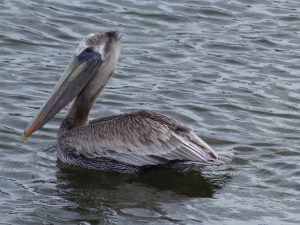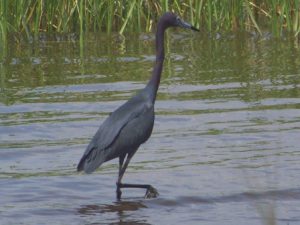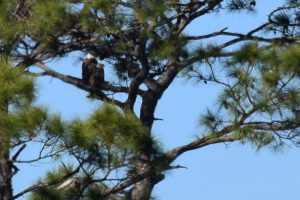The birds…
This is nuts… an article about the birds of the Gulf of Mexico in 500 words or less… right.
Do you know how many species of birds live in and around the Gulf?
It’s a lot…
Birds have the fewest barriers, and the widest range of just about any animal on the planet. They can easily fly over deserts, mountains, and oceans. Most of us have seen gulls in every parking lot in the United States, and we know that many species intentionally migrate over these large landscapes.
So, we are going to focus here on just “seabirds”. But how do you define a “seabird”? An ornithologist I worked with many years ago told me – “if it eats seafood… it’s a seabird”. I do not know if all ornithologists would agree with this, but this is what we are going with.
On our barrier islands we find mockingbirds, cardinals, and many other “woodland” birds. Since they do not eat “seafood”, we will not include them here. I have seen seabirds grouped into (a) offshore birds, (b) nearshore birds, and (c) shorebirds. Offshore birds would be those that spend most of their lives on the wing, in flight over open water. Nearshore birds are those that leave land when the sun rises for a day at sea, but eventually return that evening. And shorebirds are near the beach all the time.

Though still uncommon in some parts of the Gulf, the brown pelican is a very recognizable bird along our shores.
Photo: Molly O’Connor
I used an old bird guide to make a list of such birds that have been found in the Gulf region. As many of you know, some are only seasonal. Published in 1980, Roger Tory Peterson’s Birds of the Eastern United States list 94 “seabirds” that are either full time, or part time, residents of the Gulf. Most (92%) are shorebirds.
This guide suggests there are six species of offshore seabirds that visit the Gulf region. These species have long tapered wings and can remain aloft for hours or days. Many have special glands on their beaks to excrete salt, since they would have to swallow seawater if at sea for a long time. Shearwaters and petrels have been recorded over the southern Gulf. The northern Gannet (which prefers the arctic region) has been reported over the northern Gulf. Two species of boobies have been reported as well.
I was only able to find one record of a “nearshore seabird” and that is the Magnificent Frigate bird, also known as the “Man-o-War” bird. It gets its common name from its habitat of “pirating” food from other seabirds. It can catch food on its own but seems to enjoy stealing from others. They can be seen nearshore on very windy days high above sorrowing almost still with their “bent” wing design. In the southern Gulf they nest on mangrove islands and locals there see them on a regular basis.
Based on this guide, there are 87 species of shorebirds in the Gulf region, 59 only winter here. The list is huge and includes loons and cormorants, pelicans and herons, gulls and terns, and the stilt legged birds such as herons and egrets. Many hunters await one of 19 species of duck that spend winter here and in recent years encounters with bald eagles have increased.
Birds lack teeth so they must either grab, or cut, their prey with their bills. Members of the pelican family are famous for their “pouches” which they use to hold food for their young. Oyster catchers can snip open the bivalve with their blade-like bill. The black skimmers have a longer lower bill they dip in the surface of the water as they fly over attracting fish, which the skimmer grabs on its second pass over. Many seabirds are excellent divers and some swim very well, chasing prey beneath the waves.
Many of these shorebirds have been nesting on our barrier islands for thousands of years. Here there are few predators and the warm sand provides a great nesting spot. However, humans have connected these isolated islands to the mainland with bridges and new predators can easily grab the chicks right off the beach. The increase of non-island predators has placed some species on the protected list.
There is a LOT more that can be said about these common and amazing animals. We encourage to take time and do some birding. It is easy, you are already there, and they have no problem displaying their behaviors while you watch.
- Rattlesnakes on Our Barrier Islands; Part 1 Knowing the Snake - December 8, 2025
- Tips for Bear Encounters this Fall - November 10, 2025
- Pensacola Bay Invasive Species Summer Survey 2025 - November 3, 2025



